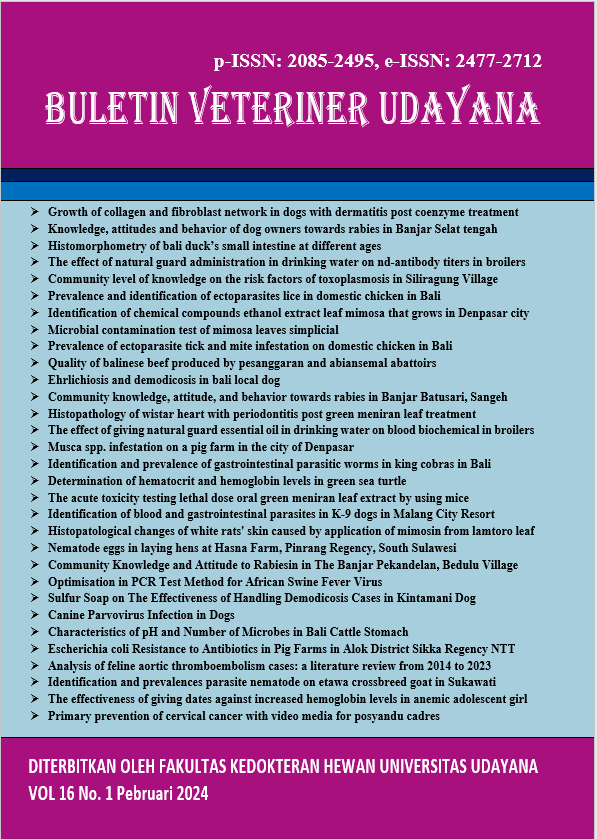ANALYSIS OF FELINE AORTIC THROMBOEMBOLISM CASES: A LITERATURE REVIEW FROM 2014 TO 2023
DOI:
https://doi.org/10.24843/bvu.v16i1.113Keywords:
Aortic thromboembolism, feline, catAbstract
Feline Aortic Thromboembolism (FATE) is a condition with a poor prognosis. This case is also commonly called 'saddle thrombus', occurs when a thrombus forms in one part of the circulation which becomes embolized (aortic trifurcation), which is an area where the aorta branches in the pelvis to the right and left iliac arteries. This case study aims to elaborate on the etiology, clinical symptoms, treatment and prevention of Feline Aortic Thromboembolism cases. This research is a literature review using descriptive and systematic methods on 21 cases of Feline Aortic Thromboembolism obtained from 20 journals during the 2014-2023 period. The diagnosis of Feline Aortic Thromboembolism (FATE) can be determined from the dominan clinical symptoms that appear including paralysis/paresis (24%) unilaterally and (67%) bilaterally, cold paw (38%) and paw discoloration/cyanosis (29%). The results of supporting examinations that can be used to confirm the diagnosis of FATE include Echocardiography examination which was carried out in 15 of 21 cases (72%), Hematology examination (43%) which was carried out in 9 of 21 FATE cases, and Blood Chemistry (57%). Treatment for cats in cases of Feline Aortic Thromboembolism (FATE) includes administration of antiplatelets (57%), administration of anticoagulants (52%), as well as administration of analgesics and heart treatment (33%). The results of this paper provide a good understanding of the clinical symptoms, diagnosis and appropriate therapy regarding one of the rare cases in cats, namely Feline Aortic Thromboembolism.




